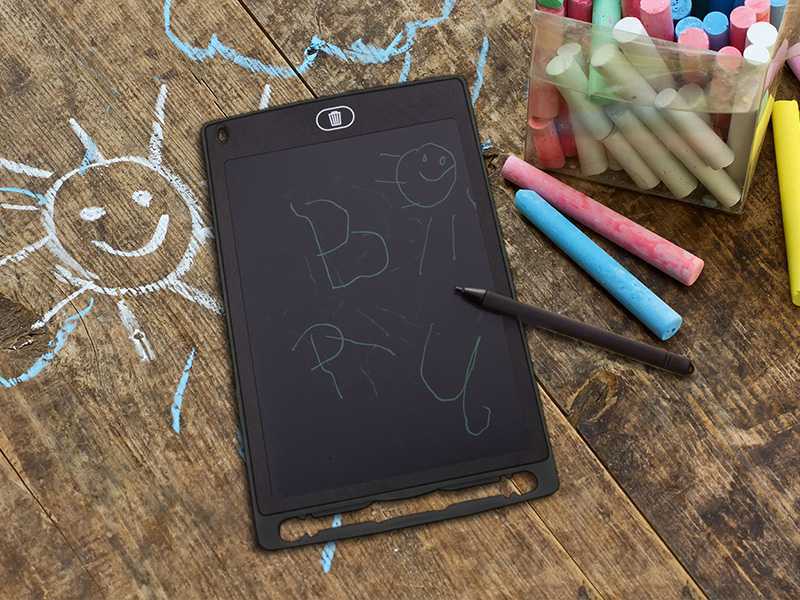The first commercially available stylus-based handhelds were introduced by Samsung and Microsoft way back in the 1990s. The technology was very nascent at that stage and used TFT screens with a touch-sensitive stylus to draw and write letters. It also came with handwriting recognition software that will allow it to recognize alphabets and numbers.
Today, technology is trying to replace papers with LCD-based pen and tablet/slate for writing stuff. They are similar to the toy slates, very thin where you can write and erase them repeatedly. In this case, you can use these slates to write stuff using the given pen, and erase them after you are done. Often, powered by battery or USB connection to a laptop, you can do lots of stuff with them.
In some more expensive models, you also get some storage to store these pages and later transfer them as PDFs or jpegs.
How do these Work?
The LCD writing pad is a digital version of paper and notebooks and hence, an environmentally friendly alternative to writing pads. It does not even use traditional ink and pen. Using these gadgets every day, you can save a lot of paper and make a difference. Whenever you want to do some rough work, you can use it and simply delete it.
The lowest of the models can support more than 50,000 erase cycles on a single battery. And, simply replace the battery to continue. There is an easy to erase button with a single tap, and you are good to go.
The construction is often made with LCD which is bright and vivid for contrast and deep writing on the screen. It is shatterproof and non-toxic too. There are usually a lot of varieties and models and they do different work. But these LCD writing pads are bringing back the technology to write as easily as on paper without spending a fortune on likes of iPads and costly touch-enabled tablets in the market.
Also, the good thing about them is that you don?t have to charge them every day. It is meant to do one thing very well, and that provides you with an alternative to writing on a piece of paper. They come in different sizes, the most widely used ones is that of the size of an A4 paper. The pen that comes with it is also pressured sensitive usually and can accommodate a lot of gestures and styles.
Pros
- They are good and work just fine.
- They can be used to write and have the feeling of writing on a piece of paper.
- They help save millions of trees that are used for making papers.
Cons
- These are not very good at drawing or for design work, architecture work and so on.
- For those, you have to go for very high-quality and expensive models of these LCD pads, that do a lot of a lot more than just writing.
Conclusion
An LCD writing pad is a great alternative as they are super cheap and great to be introduced at schools for students to learn to write on.

